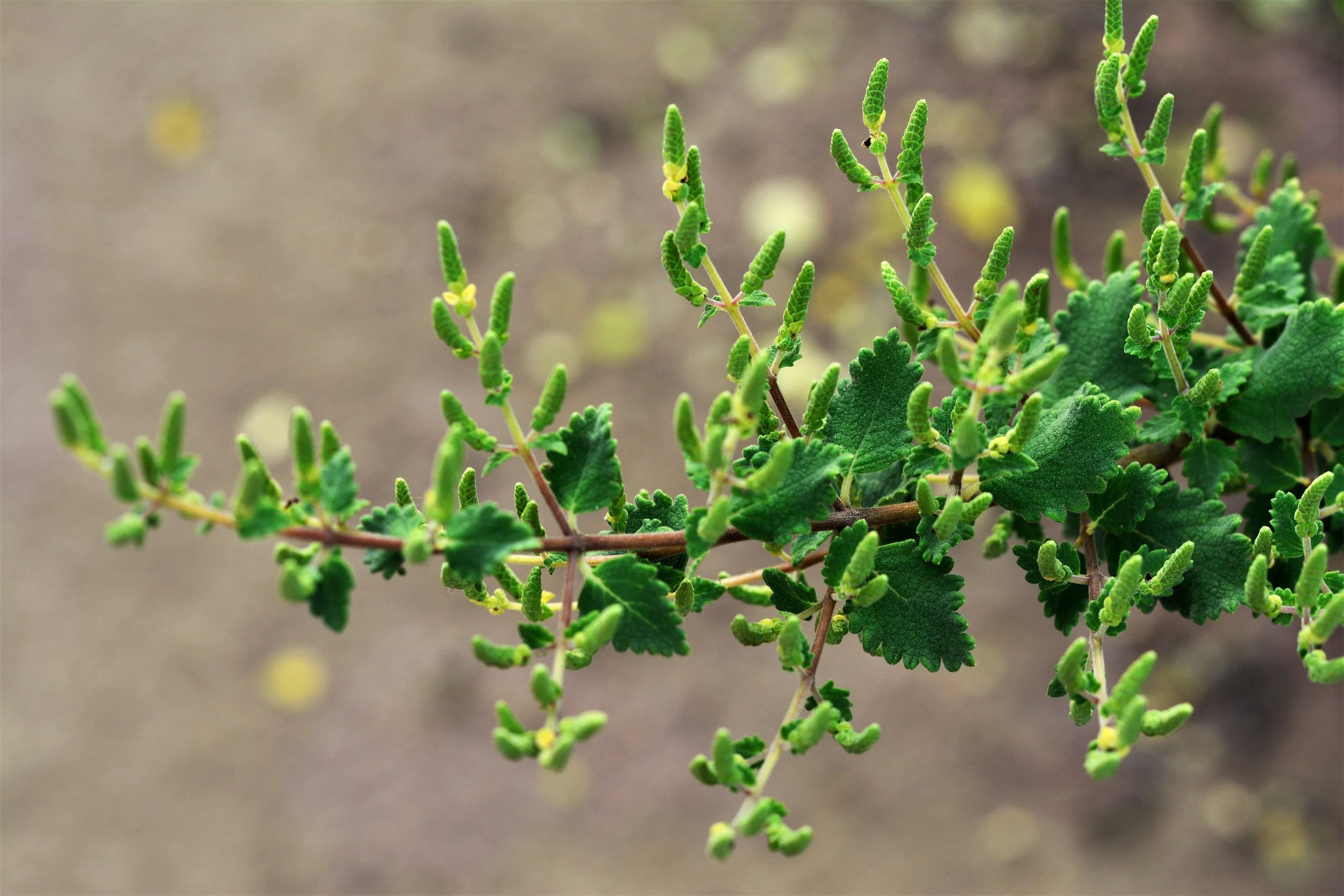Myrrh
(Commiphora myrrha)
Commiphora myrrha tree
Myrrh is the hardened resinous exudates obtained from Commiphora myrrha trees of the Burseraceae family.
Commi from the Greek word kommi : gum and phoros : carrier, and murr is an Aramic/Arabic word means bitter.
Commiphora myrrha is sturdy spiny glabrous thorny shrub or small tree that grow to up to 3-4 meters high. They are native to `Southern Arabia, and African horn. Myrrh is pale yellow waxy exudes from natural or man made cracks or fissures in the bark that coagulates quickly, become hard and glossy after harvest and darkens deeply to reddish-brown as it ages.
Outer bark peel in large or small papery flakes from the greener under-bark.
All branches are spine tipped and knotted.
Leaves trifoliate, chartaceous, greyish green or glaucous, very variable in shape and size, petiole 1-10 mm long, a few lateral leaflets, sometimes very minute may be found on both short and long shoot leaflets, and the leaves may be elliptic, spathulate or lanceolate, attenuate, cuneate, rounded or truncate at the base, rounded or acute apically, 6-44 mm long and 3-20 mm wide with 3-4 rather weak main veins, margin entire or 6 toothed on each side.
Male flowers usually precocious, 2-4 in dichasial cymes 3-4 mm long which are often sparsely glandular, bracteoles pale brown 0.5 - 0.7 mm long and wide, often lightly attached at the base and forming a fragile detachable collar, receptacle beaker- shaped, petals ablong, tapering pointed and recurved at the tip, 4.5 mm long, 1.5 mm wide, filaments 1.4 and 1.2, anthers 1.2 and 1.0 mm long.
Fruits 1-2 on jointed stalks, ovoid, flattened and beaked 2-4 mm long. Seed smooth with gentle swellings.
Commiphora myrrha is a very variable species, both in its leaves and in its pseudaril. The different forms seem to merge so imperceptibly that the recognition of infraspecific taxa is often difficult.
Commiphora myrrha is normally found in open Acacia, Commiphora bushland on shallow soil, chiefly over limestone. Altitude: 250-1300 m. Mean rainfall:230-300 mm.
Historically myrrh was used in middle eastern medicine to treat wounds and infections. In Ayurvedic medicine, myrrh has been used to treat problems associated with mouth such as gingivitis, mouth ulcers, and pharyngitis. In modern Chinese medicine, myrrh is used for improving blood circulation, treating traumatic injuries, incised wounds, bone, tendon, and ligament, pain, amenorrhoea, and hemorrhoids or other painful swellings.
Commiphora myrrha rersin
Medical Uses of Commiphora myrrha
Indigestion.
Ulcers.
Colds.
Cough.
Asthma.
Congestion.
Joint pain.
Hemorrhoids.
Bad breath.
Sore mouth or throat.
Cancer
Leprosy
Syphilis
Schistosomiasis.
Stimulant of menstrual flow.
Myrrh is used a mouth wash for soreness and swelling, inflamed gums (gingivitis), loose teeth, canker sores, bad breath, and chapped lips. It is also used topically for hemorrhoids, bedsores, wounds, abrasions, and boils.
Commiphora lipophilic extract has analgesic and anti-inflammatory action through Prostaglandin E inhibition at doses of 8mg/kg.
Myrrh is contraindicated in pregnancy due to its emmenagogic activity.
In foods and beverages, myrrh is used as a flavoring component.
In manufacturing, myrrh is used as a fragrance, in incense, and as a fixative in cosmetics. It is also used in embalming.
Commiphora myrrha tree sap
Opoponax
Refer to several species blend of unrecognized tree sap similar to some extent to Commiphora myrrha resin and has a distinctive smell and more essential oil yield rather than Commiphora myrrha.
Commiphora myrrha to the left versus Opoponax to the right







